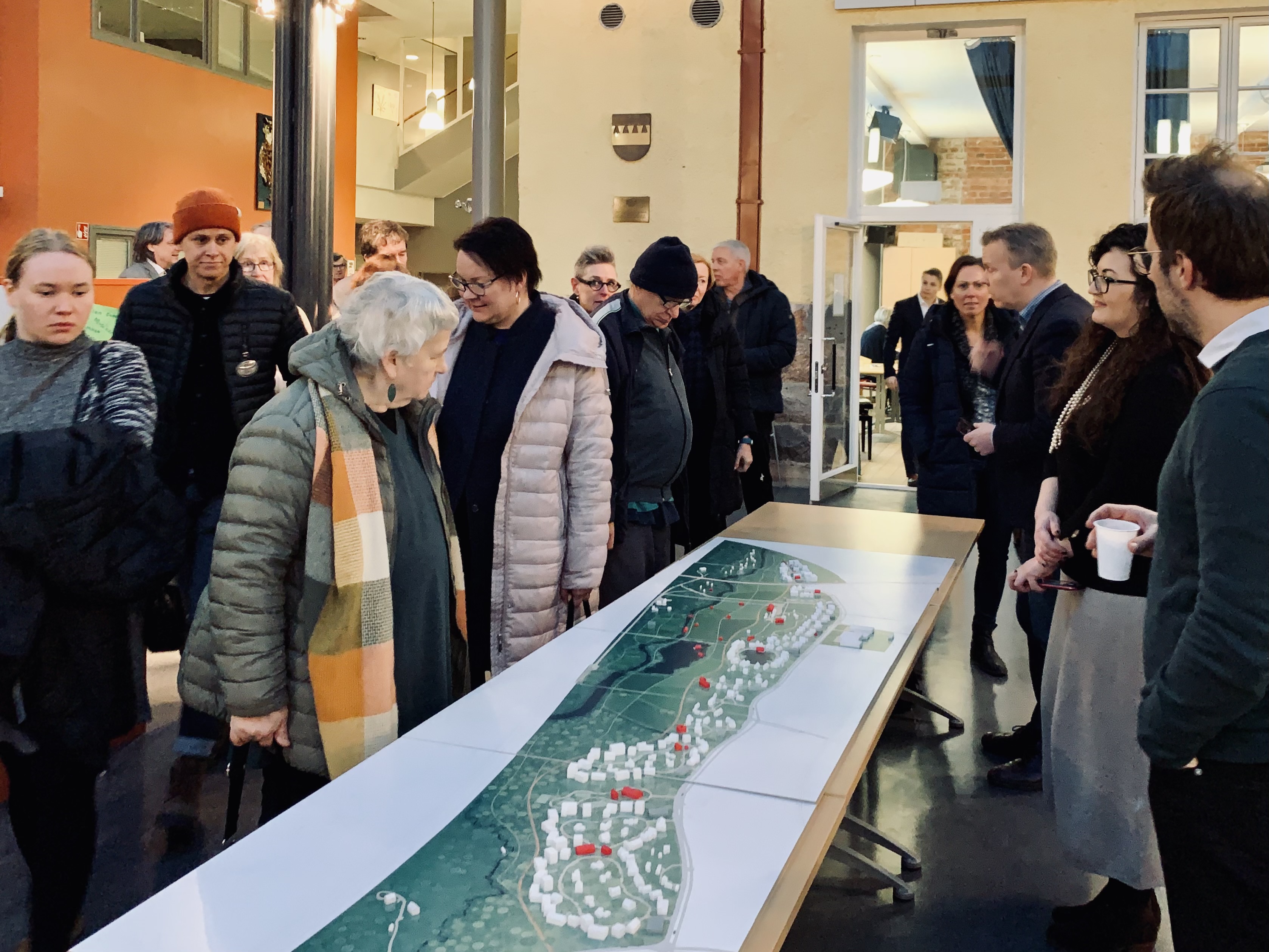











From greenfield to Living Lab
Framed by a motorway on the eastern side and a railway on the western side, the original site is characterised by farmland, a forest and the river Keravanjoki. We drew inspiration from these natural elements and developed three spatial concepts for the master plan: living in the forest, living on a farm, and communal living in clusters.
In the northern segment, we reforest greenfields to create a unique new environment in which to place sustainable apartments, detached homes and townhouses. The middle section is composed of farmland on which we place dwellings, greenhouses, food markets, and childcare facilities. The southernmost part of the site is composed of various clusters of homes that share playgrounds, gardens and community spaces.
All three districts have free space on which Living Lab experiments and pilot projects that focus on the circular economy can come to fruition. Meandering pedestrian and cycling paths connect the homes and various facilities, as well as the people.
Next to the urban framework, we delivered a circular economy toolbox that provides the City of Kerava with all necessary ingredients to make sure that the neighbourhood is truly circular. After the Housing Fair, the central park becomes a recreational zone that the entire city can enjoy.










